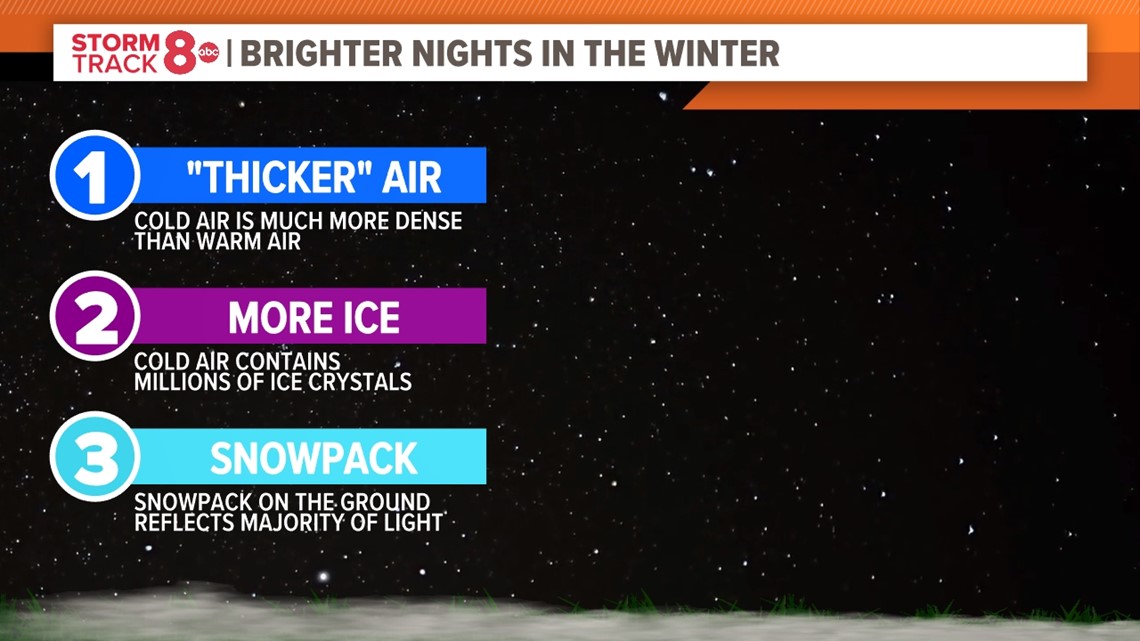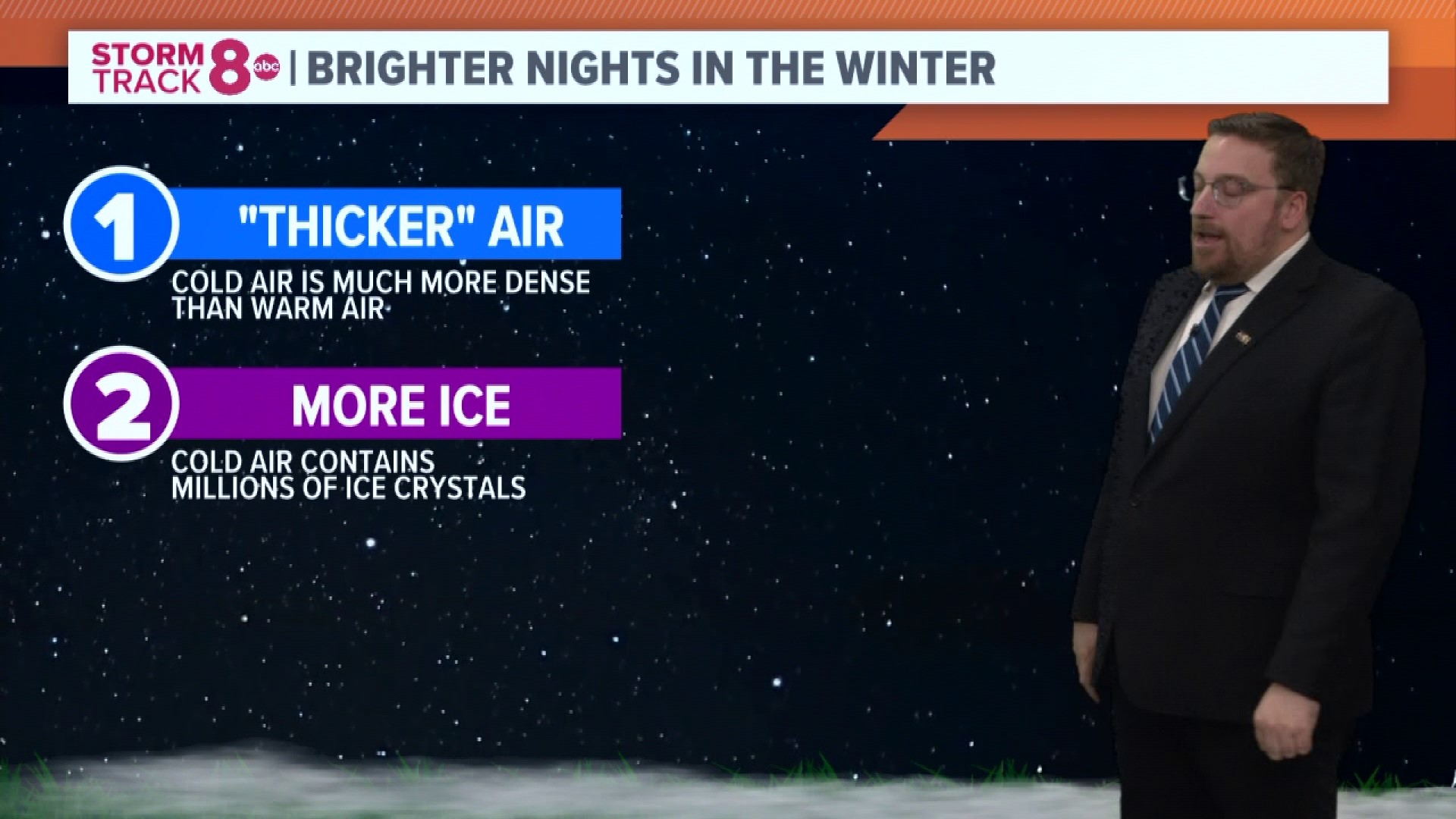MOLINE, Ill — Our very own Shelby Kluver made a really important observation about the amount of light we see outside at night, especially after this most recent snowfall. She's onto something! There is indeed a reason why we typically see brighter nights during the wintertime versus any other time of the year. It isn't just the snow, though. Let's dig in!
The thicker the air...
Cold air is really dense. This statement often throws people for a loop because many believe that warmer more humid air would be 'thicker' because it is filled with moisture. That isn't the case. Warm, humid air is less dense than warm, dry air because water vapor is lighter than the other gases in the air.
This heavier, thicker air is also capable of suspending tiny ice crystals, especially on really cold days when temperatures are well below freezing. It's what helps develop sundogs, or a rainbow halo around the sun. These ice crystals are efficient at reflecting all sorts of light, including from the moon, street/city lights, and yes, even your front porch lights. The colder and more dense the air, the more light that gets scattered around a given region.


The snow factor
A thick snowpack on the ground is also a great reflector of light. In Storm Track 8 University, we talked about albedo, which is the ability of a certain body to reflect or attract heat from light. Snow has a very high albedo, meaning it reflects a ton of light energy. So, the same case can be made here with light coming from all sorts of sources. Winter nights with snowpack on the ground will be some of the brightest of the year, especially when paired with a full moon!
So, there you have it. No trickery here. Just good old-fashioned chemistry and physics intermingling with each other.
Have a question that you would like me to answer for an upcoming Ask Andrew segment? Submit it, here!

